Extinct Megafauna of the World
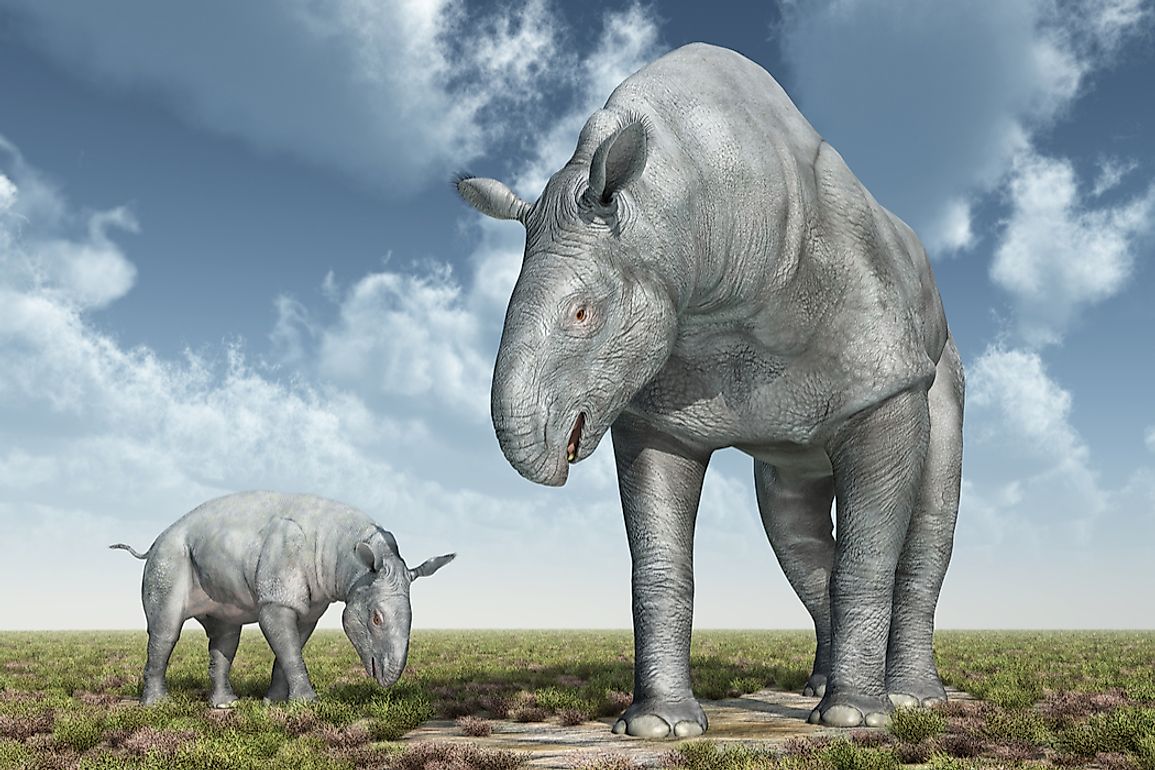
The term megafauna has Greek origins and means "large animals". Specifically, it refers to large animals who inhabited the earth’s ecosystem during previous periods and are extinct today. Megafaunas most likely became extinct because of environmental and ecological factors, the last of their species coming to an end by the end of the last ice age because of the onset of warmer climatic conditions. Animals that adapted better to the new climate replaced megafaunas. Below is a list of ten such megafaunas that closely resemble their modern-day relatives.
10. Paraceratherium
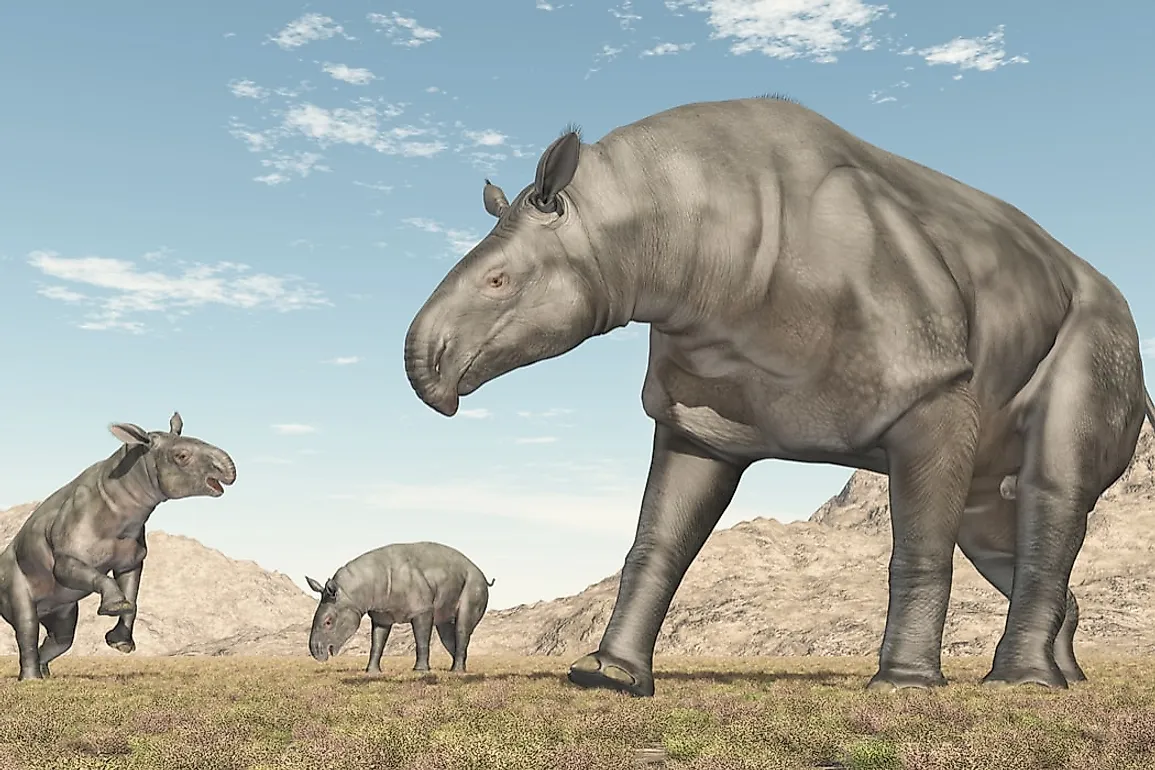
The now extinct Paraceratherium was a hornless rhinoceros. It was one of the largest land mammals to have ever lived. This mammal lived from 34 million to 23 million years ago across Eurasia between modern-day China and the Balkan Peninsula. Paraceratherium may have weighed between 33,000 pounds to 44,000 pounds. The animal’s shoulder height measured approximately 15.7 feet and its total length was about 24.3 feet. Other characteristics of this mammal included long pillar-like legs, long necks (4.3 feet), and large incisors that resembled tusks. Paraceratherium browsed leaves, shrubs, and soft plants and lived in arid areas as well as forested areas. Because of its bulky size, this animal would have had few predators.
9. Diprotodon
The word Diprotodon mean “two forward teeth”. The Diprotodon was the largest marsupial to ever have walked on earth. The Diprotodon lived from about 1.6 million years ago until 46,000 years ago when it became extinct. The fossils of this Australian megafauna that resembles Kangaroo were found in many parts of Australia. The largest Diproton may have been the size of a hippopotamus, approximately 9.8 feet long from tail to nose and stood 6.6 feet high at the shoulders. Diprotodon also weighed about 6,150 pounds. Grasslands, forests, and woodlands formed the perfect habitat for the animal because, within these settings, they could easily get water, grass, leaves, and shrubs for food. Today, the closest relatives of this animal include the koala and wombat.
8. Megatherium
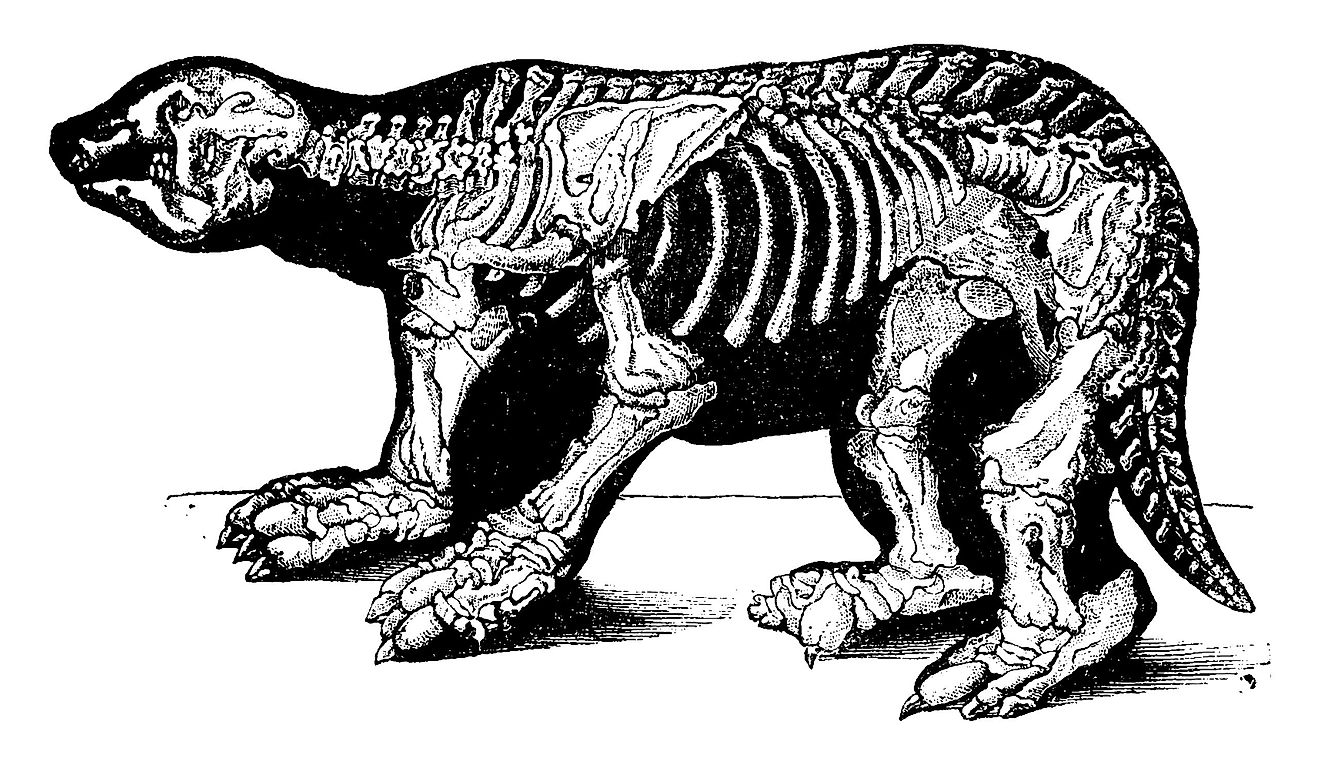
The name Megatherium has a Greek origin meaning the “Great Beast.” This mammal also went by the name “the giant ground sloth” and it lived in South America from the early Pliocene period to the end of the Pleistocene period. At the time, the Megatherium was almost the size of an elephant and weighed approximately four tons. From head to tail, the animal was about twenty feet long with a height that enabled it to feed on branches. The Megatherium tail was muscular and it used the tail together with the hind legs to form a tripod-like stand that supported its upper part of the body during feeding where the long forelimbs with curved claws pulled down tree branches. Megatherium resembles the modern-day anteater and walked on its feet’s sides due to the intruding claws. This animal’s mouth was narrow and cone-shaped.
7. Glyptodont
Glyptodontinae was a large armadillo that first lived in South America and spread to parts of North America. It became extinct during the last ice age. These animals had body armor that resembled that of a tortoise, however, the Glyptodont could not withdraw its heads. The Glyptodont’s tail also had bony rings that protected it from harm. Additionally, the tail had spikes that the animal used to defend itself from threats. The armor consisted of bone matter called scutes whereas each species had a unique pattern on the armor and unique shell type. With sizes like that of a modern automobile (two tones), this animal effectively defended itself from larger and stronger predators. The Glyptodont was a herbivore; therefore, it had no canine or incisor teeth but had effective cheek teeth for grinding the toughest vegetation.
6. Palaeoloxodon
Palaeoloxodon was a straight-tusked elephant that lived in Cyprus, Germany, Japan, India, Italy, England, and Malta. It became extinct 30,000 years ago. Palaeoloxodon namadicus species was the largest ever known land mammal. Recent analyses indicate that this animal is a close relative of the African forest elephant although previous such analyses also indicated a possibility of a relationship with the Asian elephant. Scientists believe that some Japanese and Chinese species survived until 3,000 years ago.
5. Cotylorhynchus
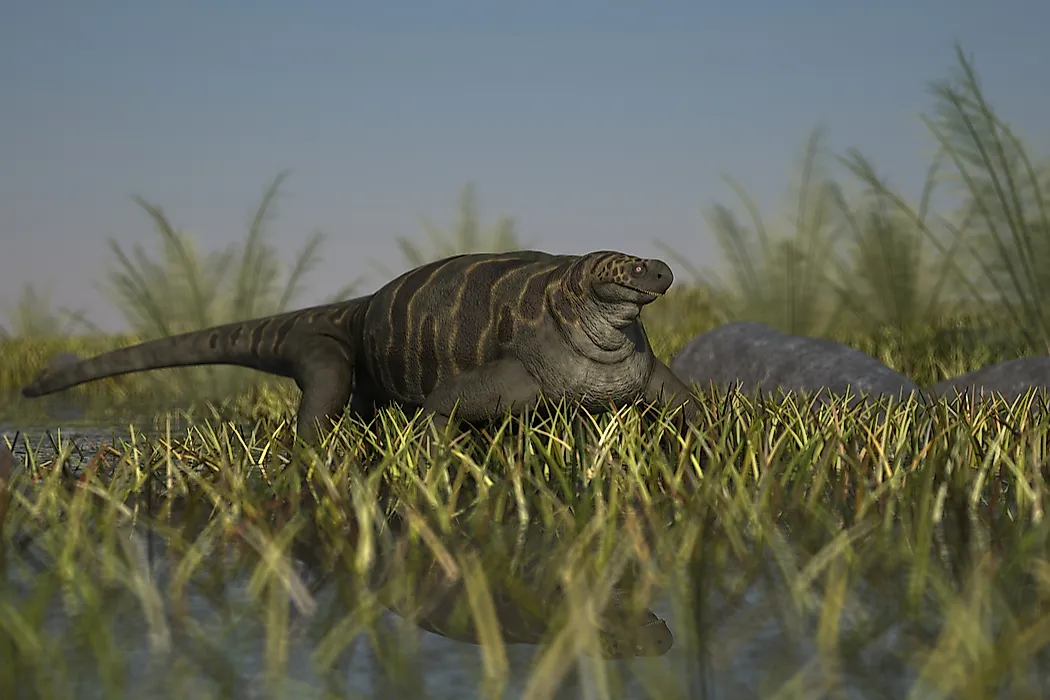
Cotylorhynchus belonged to the genus synapsids that lived during the Early Permian period in the present southern part of the North American continent. This animal was the largest earth vertebrate during its time although some sources suggest that it was aquatic or semi-aquatic. Cotylorhynchus had a bulky torso, small head, and barrel-shaped tail that thinned from the torso. An adult measured approximately 9.8 feet. The skull had extra-large nostrils and temporal openings.
4. Anteosaurus
Anteosaurus or an "Antaeus reptile" was a large carnivorous synapsid. This reptile lived in present-day South Africa between 266 and 260 million years ago. The Anteosaurus’ skull was long, (approximately 31 inches) and narrow. This non-mammalian synapsid grew up to lengths of between sixteen feet and twenty feet and weighed up to 1,300 pounds. The upper teeth were large, the canines were big, and the front of the mouth curved upwards because of a premaxillary bone of their upper jaws.
3. Prionosuchus
Prionosuchus was an archegosaurian of the genus of large temnospondyl that lived during the Permian period and became extinct by the end of the period. The archegosaurs occupied the ecological niche of alligators and crocodiles and lived in South America, especially Brazil within a humid and tropical environment. Prionosuchus measured up to thirty feet long and the skull was about 5.2 feet long. Other body features included short legs, a tail for swimming, sharp teeth, and an elongated and tapered snout making the general appearance to resemble that of a modern-day gharial. The internal respiratory and digestive system resembled that of the fish.
2. Dunkleosteus
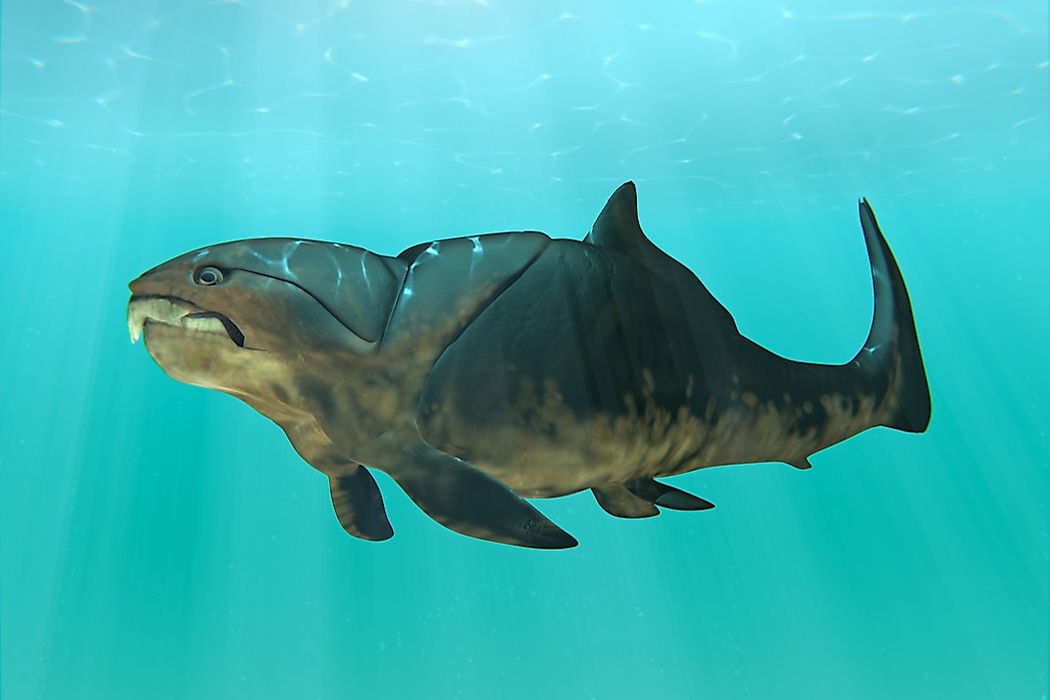
Dunkleosteus lived during the Late Devonian period (358-382 million years ago) and belonged to the genus of arthrodire placoderm fish. In Greek, the second part of the name Dunkleosteus (osteus) translates to “bone.” Species of this genus include some of the largest placoderms to ever live, most grew up to lengths of 19.7 feet and weighed up to 1.1 short tons. Just like modern suction feeders, the Dunkleosteus also opened and closed its jaws in quick succession and had a bite force of approximately 6,000 N at the tip and 7,400 N at the blade edge. This placoderm had an armored exterior made up of two bones that may have made it a slow swimmer. The animal also had a beak made up of two pairs of bones. Recent fossil reconstructions show that some species had shark-like structure, including a strong anterior lobe on the tail.
1. Jaekelopterus
The Jaekelopterus lived during the Early Devonian age and it was a giant predatory eurypterid which is a group of aquatic arthropods. This megafauna looked like a giant scorpion. Fossil remains of this animal indicate that it was between 7.5 feet and 8.5 feet long making it the largest arthropod ever discovered. According to analyses, the Jaekelopterus had high visual acuity through its compound eyes. Jaekelopterus was also an active predator that lived in estuaries and freshwater systems although initial suggestions pointed at a marine habitat. This anthropod’s claws measured approximately 1.5 feet long or more.











